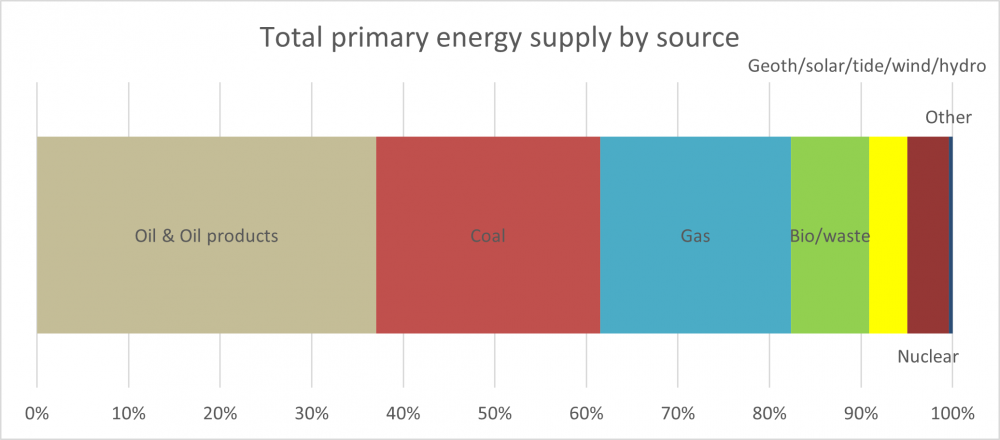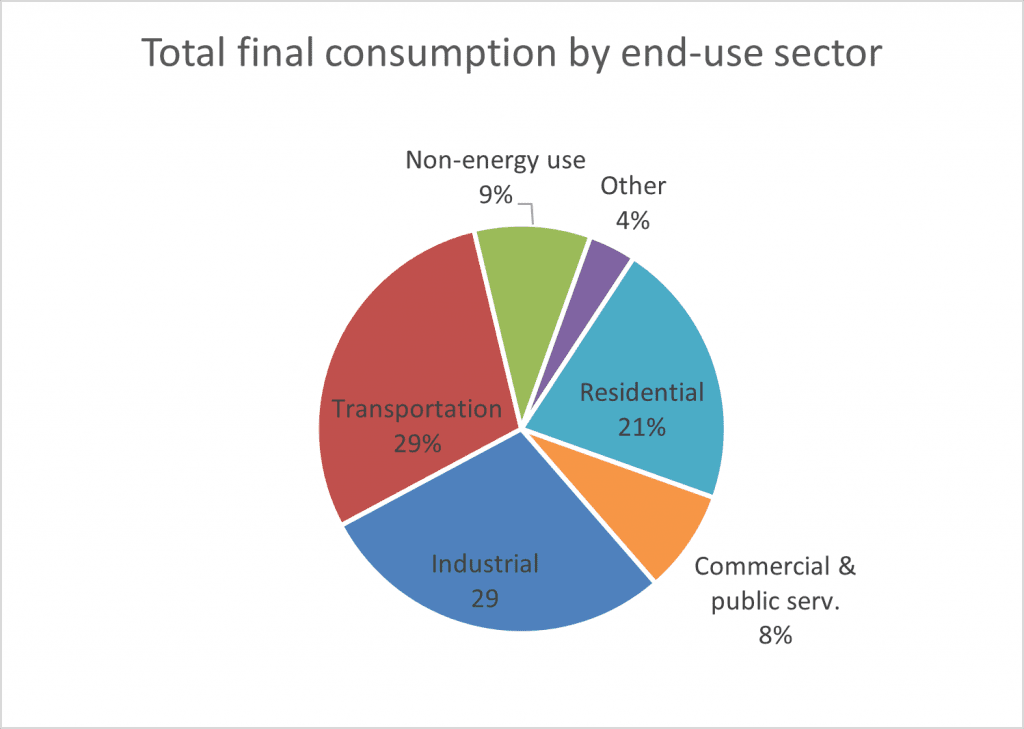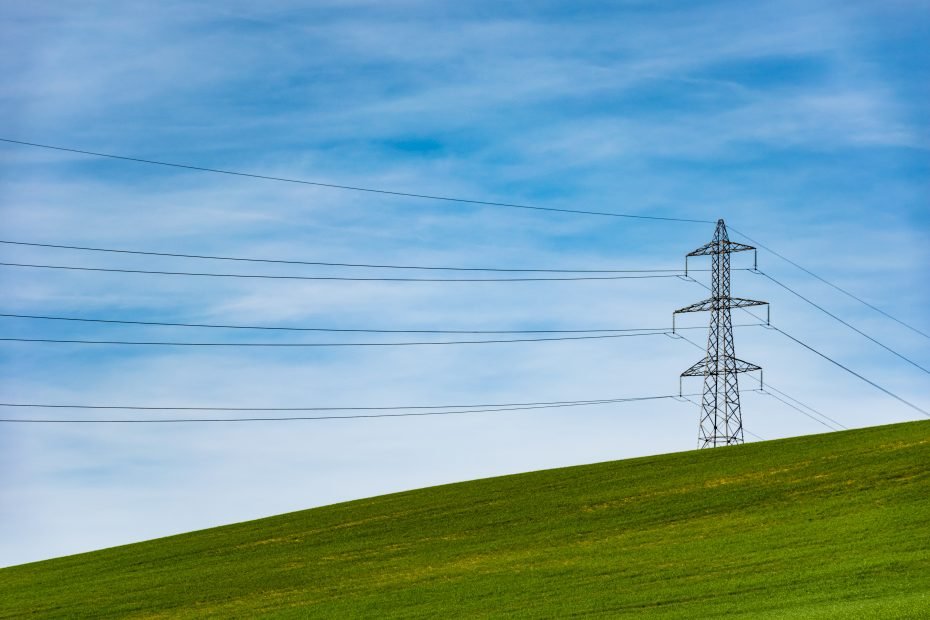Welcome back, readers! In my last article, we have seen that carbon dioxide accounts for almost three-quarters of our GHG emissions, with about 33.4 billion tCO2 from the energy sector in 2019. These emissions come mainly from the burning of fossil fuels that we use to produce our energy.
Today we will analyze some energy statistics to understand the role of fossil fuels in the world’s energy system. We will discuss how much energy we get from fossil fuels, how we produce our electricity, and where we use all that energy.
Let’s start with the amount of energy we have at our disposal (before transformation processes).
In 2018, the world’s total primary energy supply was equal to 597,857 Petajoules (PJ). One petajoule is 1015 joules (one followed by 15 zeros – 1 million billion), so it’s a pretty big number. One petajoule is enough to cover the electricity used by 45,725 households in a year (considering average home uses approx. 22 gigajoules of electricity in Australia – energy.gov.au)
How much of our energy supply comes from fossil fuels?
The chart below shows that globally we get the largest amount of energy from oil, followed by coal and gas. Fossil fuels (oil, coal, and gas) make more than 80% of our total primary energy supply.

Fossil fuels are primary energy sources (along with nuclear and renewable energy sources) and input to several transformation processes; we don’t use them as we find them in nature. We send oil to refineries, part of coal and gas to power stations to produce electricity.
Where does our electricity come from?
The electricity generated by power stations is called secondary energy because it is produced from primary energy sources. As you can see in the illustration below, the electricity we globally generate comes mainly from coal (38%) and gas (23%)– fossil fuels add up to 64% of the generation (if we add 3% from oil). This is why we hear that we need to decarbonize the electricity: it means that we need to add more and more renewable energy sources in input to reduce our emissions.

Before talking about solutions, we need one last step in our analysis.
Where do we use all that energy?
To answer the question, we need to look at where the energy supplied goes after transformation processes (losses & exports) – that is, our total final consumption.
It was 416,052 PJ in 2018.
Let’s have a look at the end-use sectors, where we use all that energy. These end-use sectors are: residential (e.g., houses, apartments), commercial & public services (e.g., malls, schools, hospitals), industrial, and transportation. We can see in the chart below that we used 29% in the transportation sector, another 29% in the industrial and 21% in the residential sector. Combining residential & commercial, we get a 29%. It is clear that we need many solutions in the different end-use sectors, and we need to focus on each one of them to reduce emissions.

One last thing – I want to leave you with a reflection.
The energy transition challenge is a complicated one: while in developed countries we will need to increase efficiency and reduce consumptions (to reduce emissions), in developing countries, we will see an increasing demand for energy as more people will have access to energy.
Globally, 759 million people do not have access to electricity, and around 2.6 billion people (this is around one-third of the global population) don’t have access to clean cooking and rely on dirty biomass fuels such as charcoal, wood, coal for cooking (2019 data from Sustainable Energy For All). According to the World Health Organization, indoor air pollution causes 3.8 million deaths each year, especially among women and young children in developing countries. We could save millions of people by providing clean cooking solutions (so they will not breathe cooking smoke) while reducing the environmental impacts of those fuels.
The point is that when we talk about climate change, policies and actions must be integrated & coordinated with the United Nations Sustainable Development Goals to ensure a country’s development.
Climate change is a complex topic, and there is no single solution to solve this huge (global and local) challenge. However, I believe that we can act and take responsibility for more sustainable choices every day – as a person or community, business leader, or government. If you would like to know more about my blog, visit protegoterra.org.
Thanks for reading!
If you enjoyed this article, subscribe to Protegoterra’s newsletter.

